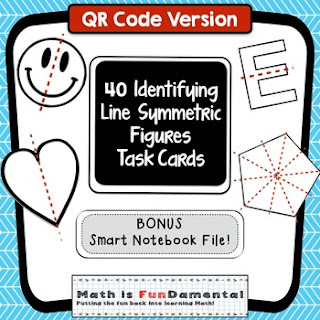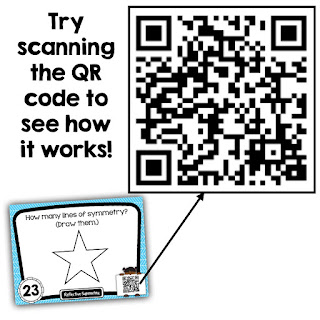Until I am measured
I am not known,
Yet how you miss me
When I have flown
Time management was not something that came naturally to me when I first started teaching. After 20+ years of teaching, I can’t say I’ve mastered it, but I have learned a few things. Here’s my 2¢ on the topic of time and making the most of it.
As the end of the year or as state testing approaches, you’ll feel that inevitable dread that you wish you had another week or two to prepare your students for this or that. That’s okay – accept it. My recommendation is to start the year with a long term plan of what topics that you will cover and when. For a discussion on what math topics to cover and in what order, try reading my post on this subject. (How much does sequence of instruction matter in Math?)
Be sure to plan in lots days for catch-up when you (for whatever reason) fall behind. It might be school assemblies, fire drills, snow/fog days, or other events that we don’t usually think about much when we long term plan. It might be that you thought the students would get a topic in two days and it really took three. Also, consider the topics that you need to hit the hardest and prioritize them in your long term plans to give these topics the most time or placement at the best time. For example, I don’t recommend starting something brand new and challenging the week before Christmas or Spring break.

I’m sure you’ve heard this before, but it’s worth saying again – the “mile wide, inch deep” philosophy may expose your students to all of the concepts they are supposed to know, but they won’t have an opportunity to build a deeper understanding. Many teachers are worried that they won’t get to some topic or another before the big state test, but trust me on this one, it’s better that they know what you’ve taught really well going into the test, than to have skimmed through everything on a surface level just to say that you have “covered” everything.
This is probably the most common mistake I see young teachers make. Often using the textbook as their guide, they go thorough topics too quickly for students to get the practice necessary to fully grasp a concept. Relatedly,…

This is one that I think is often misunderstood by administrators more so than teachers. When Common Core first came around, one of the things my administrator used as a selling point to us was that it had “fewer” standards than Ohio’s previously adopted Math curriculum. While that did appear to be true at a glance, in practice, this just wasn’t true. Take for example this objective:
CCSS.Math.Content.4.NBT.B.6
Find whole-number quotients and remainders with up to four-digit dividends and one-digit divisors, using strategies based on place value, the properties of operations, and/or the relationship between multiplication and division. Illustrate and explain the calculation by using equations, rectangular arrays, and/or area models.
Anyone who has taught “long division” knows that it is going to take more than one lesson! I usually take at least 3 weeks on this one standard.
It also makes a big difference what exposure students have had in the previous grade. In third grade common core, students are not even expected to have mastery of basic division facts so even your strongest students will have very little foundation for long division. Also, notice that like for most common core objectives there are a lot of other expectations sprinkled into this objective for different ways a student should show understanding of a skill other than learning the basic algorithm. (such as using equations, arrays, and area models)
For me, teaching this one long division standard takes a minimum of three weeks of introduction and lots of practice, practice, and more practice. Which is why you need to…

 |
| One of my favorite sayings to use in Math class |
My favorite ways to practice include games like Kahoot, Quizizz, or Classroom Jeopardy. We use online games like Sumdog and Prodigy. I also use a lot of QR codes, task cards, and sometimes just plain ole’ worksheets. Like any learning, some repetition is necessary to strengthen understanding. The secret, in my opinion, is to make it as fun as possible. (You know, put the “fun” in fundamentals.)

There are a lot of reasons to do this. First of all, this frees you up to help students as they are working. I usually tell my students something like, “While you are working on these problems, if you get one wrong I’d like you to come and check in with me. If you understand your mistake, you can explain it to me quickly and you’ll be on your way. If you don’t understand your mistake, we’ll talk about it, or I can help you a little longer if needed.”
Another reason to have students self-check is that it encourages them to take ownership of the learning. They can monitor their own learning rather than the teacher always being the judge of mastery.
At some point, I’ll do a more detailed post about how I set up activities for self-checking in different ways. Here, I’ll share just a couple examples. I mentioned that I like to use coded messages, QR codes, interactive slideshows, and simply putting the answers somewhere for students to check themselves. Here are a few of my products that use these techniques linked below:
Yours will vary from mine of course, but if you don’t have routines of some kind, you are inevitably wasting valuable time during your math class. See master teaching guru Harry Wong’s view on procedures in the video below:
Train your students on your procedures the first week of school and you will benefit from this time savings each day from then on.
Here are my classroom procedures:
- Walk into the classroom quietly and set your materials at your seat.
- Line up to collect your math supplies for the day
- Head all papers and glue in any interactive notebook pages
- Listen to the math song of the day (more on this in a later post)
When the song of the day is done, I am ready to begin and the students should be, too. Based on the song length, this means students have about 3 or 4 minutes at the start of class to collect and get everything they need ready.
I have a dry erase board that I write the agenda for each day’s lesson. If needed, I can simply make changes if I think we need more time for a particular topic or want to remove/change an activity. This saves time because if a student doesn’t remember what they are supposed to do next (heaven forbid they weren’t listening attentively), I can simply point to the agenda board, and they should be redirected as to what to do.
A typical Math class agenda board for me might look like this:
1. Introduce multiplying fractions (interactive notebook pages)
2. Multiplying fractions worksheet (together)
3. Multiplying fractions task cards (on own) – show Mr. P when done
4. Choice activity
*Help another student
*Sumdog
*Prodigy
In case you’re wondering, here’s how I’d break down my “typical” Math periods: (We have 70 minute periods.)
5 minutes to transition (collect materials and introduce what we’re doing that day)
~10-15 min. introduction of skill
~10-15 min. guided practice ~10-20 min. practice independently ~5-10 minutes – choice activities to reinforce the skill (stations, math fact practice, online games, etc…)
~5-10 minute assessment activity like Kahoot (sometimes I do this at the start of the the next day’s lesson as a quick review)
There’s a saying, “if you fail to prepare, you prepare to fail.” That sounds harsh, but it is unfortunately true with regards to teaching. A skilled teacher will long term plan, plan weeks or months at a time in more detail, and make day to day lesson plans in fine detail. Does every lesson go exactly as planned? Absolutely not! Another famous quote is, “The best laid plans of mice and men often go awry.” Sometimes you’ll plan extensively, and things won’t go the way you expected. That’s okay. But, if you don’t plan ahead, you be sure that you will be disappointed with your results.
Got an awesome tip for maximizing time in your classroom? Leave your idea in the comments.







